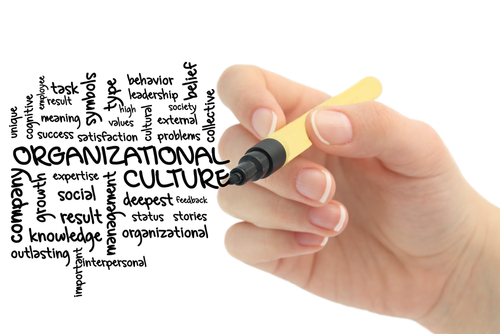Organizations often deploy various strategies like corporate retreats, training programs, and performance incentives to embed their company’s core values and create a strong organizational culture. Despite the effort and resources spent, many companies still grapple with weak or unevenly adopted cultures.
The missing piece in this puzzle is a profound understanding of how employees are best socialized and what promotes resistance to socialized behaviors. While academic sounding, this is important to understand.
Socialization is the process through which individuals learn and adopt the norms, values, and behaviors appropriate to their group. In the case of organizational culture, socialization is the way culture is transmitted (or weakened). When employees resist the company’s socializing drivers, the organizational culture remains weak (or nonexistent).
It’s essential to understand the differences in what will facilitate adherence (or create resistance) to the company’s desired norms, values, and behaviors. From working with numerous companies on organizational culture initiatives, ignoring these critical differences creates a loss of time and money and a weak company culture.
Building A Culture That Sticks
Establishing an organizational culture that sticks requires a nuanced approach tailored to the majority’s socialization dynamics. In my work with companies, I’ve uncovered three insights that organizations must grasp when instilling a strong organizational culture.
They can be discerned through uncovering the answers to three instructive questions. In this way, organizational leaders will have a more focused “how to” guide to create a strong organizational culture.
Here are the three key questions:
Question #1: How much are employees influenced by their team or group?
Do you know the extent to which your employees defer to group norms — or are unfazed by what the group wants (and even prefers to do things their own way)? This is a cultural difference. When working with a company in which a collective mindset is dominant within the workforce, organizational culture initiatives can be crafted with greater emphasize on the group, team, or unit’s expectations.
However, if individualism prevails, social pressure can be counterproductive. Instead, organizational initiatives would instead align cultural values with performance management, rewards, and promotions.
Question #2: Do employees model their leaders?
The extent to which individuals care about (or are somewhat indifferent to) their leaders’ example and authority is another important insight that will affect how to best socialize organizational culture. When the data indicates that employees adopt more hierarchical values, organizational culture initiatives would involve communication mechanisms for encouraging employees to model their leaders’ norms and behaviors.
For these organizations, deference towards leadership creates a natural socializing dynamic: senior leaders can transmit expectations based on corporate values to their junior associates. Leaders, in these cases, need to actively embody the values they wish to instill at all times.
Conversely, when the company’s dominant value in the workforce tilts more toward egalitarianism, the reliance on senior leadership as socializing agents will likely fall flat. With these companies, socializing a strong corporate culture is a longer process. It will require more dialogue about values and promoting a sense of shared ownership.
In these companies, fostering co-created policies and behaviors can help lead to greater alignment with organizational values.
Question #3: To what extent is the organization (and the work it provides) a priority in the lives of employees?
Humans willingly socialize into the groups we prioritize. If we value being a member of a group, we more quickly adopt that group’s norms, behaviors, and values. Like college students pledging a fraternity or sorority, we all want to show that we’re dedicated to and can be a worthy member of the group.
Therefore, knowing the extent to which employees consider the organization (and the work it provides) a central aspect of their lives enables companies to better position how they create a strong organizational culture.
Where work isn’t a priority, corporate cultures are often weaker.
In those cases, structured training around values, as well as any programs designed to support the socialization of corporate values, will often backfire. Greater work will be needed to create adherence to corporate norms and behaviors through policies and procedures.
Leveraging These Insights for Cultural Excellence
Building a strong, effective organizational culture goes beyond standard practices. It requires a deep understanding of the workforce. This involves moving beyond one-size-fits-all solutions to a more personalized, insightful approach that acknowledges and embraces the unique makeup of employees.
Understanding the nuances of group dynamics, leadership modeling, and work-life priorities is essential in cultivating a strong organizational culture. The use of assessment tools offer a strategic advantage in this endeavor, enabling organizations to tailor their cultural initiatives effectively. By addressing these three critical questions, organizations can transform their culture into a dynamic, strategic, and enduring asset.
Paula Caligiuri is a D’Amore-McKim School of Business Distinguished Professor of International Business at Northeastern University and founder and CEO of Skiilify, a digital platform for improving cross-cultural communication. She has a new book, Build Your Cultural Agility: The Nine Competencies of Successful Global Professionals, and offers a free web tool to assess cultural agility at myGiide.com.

